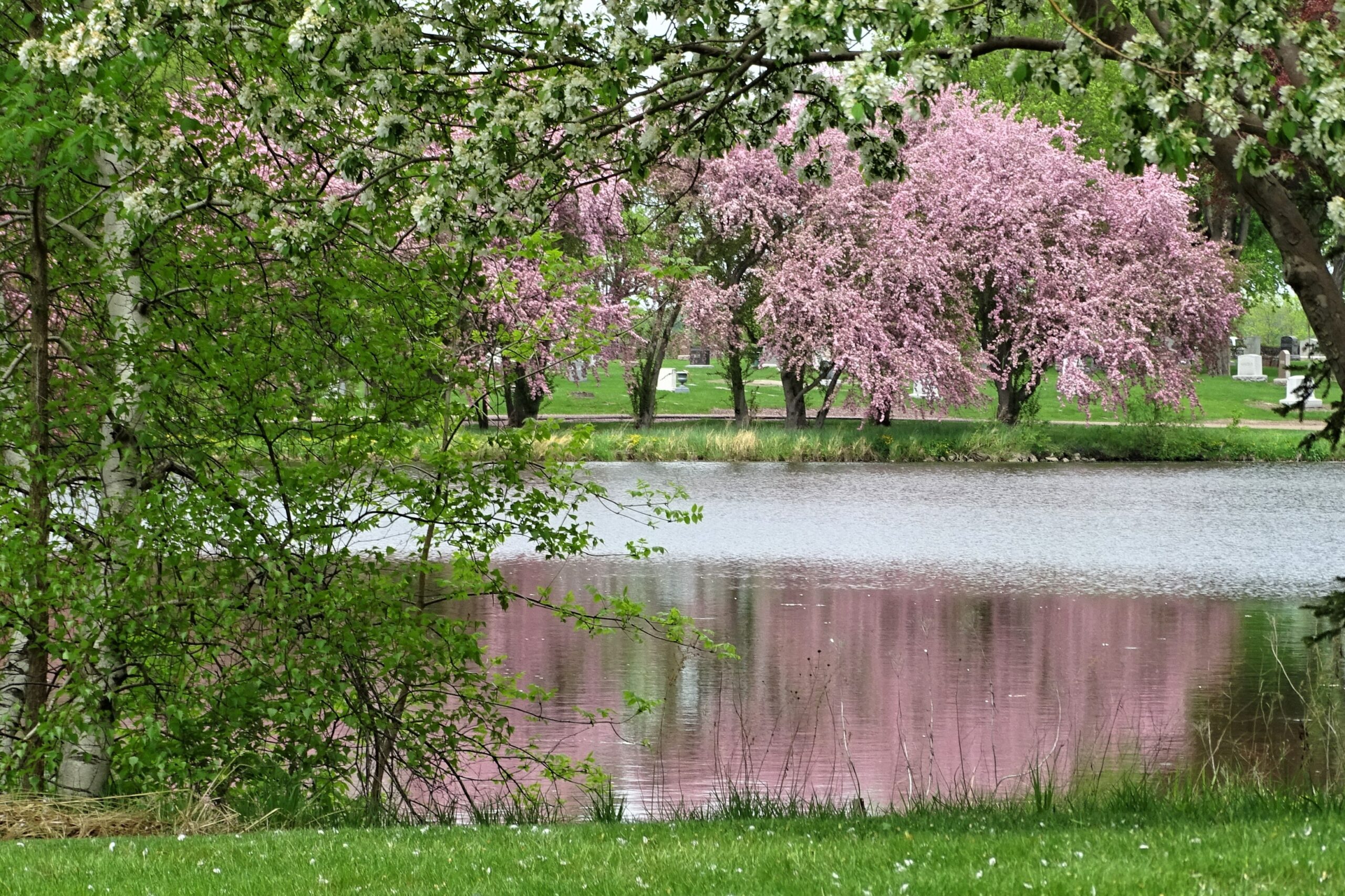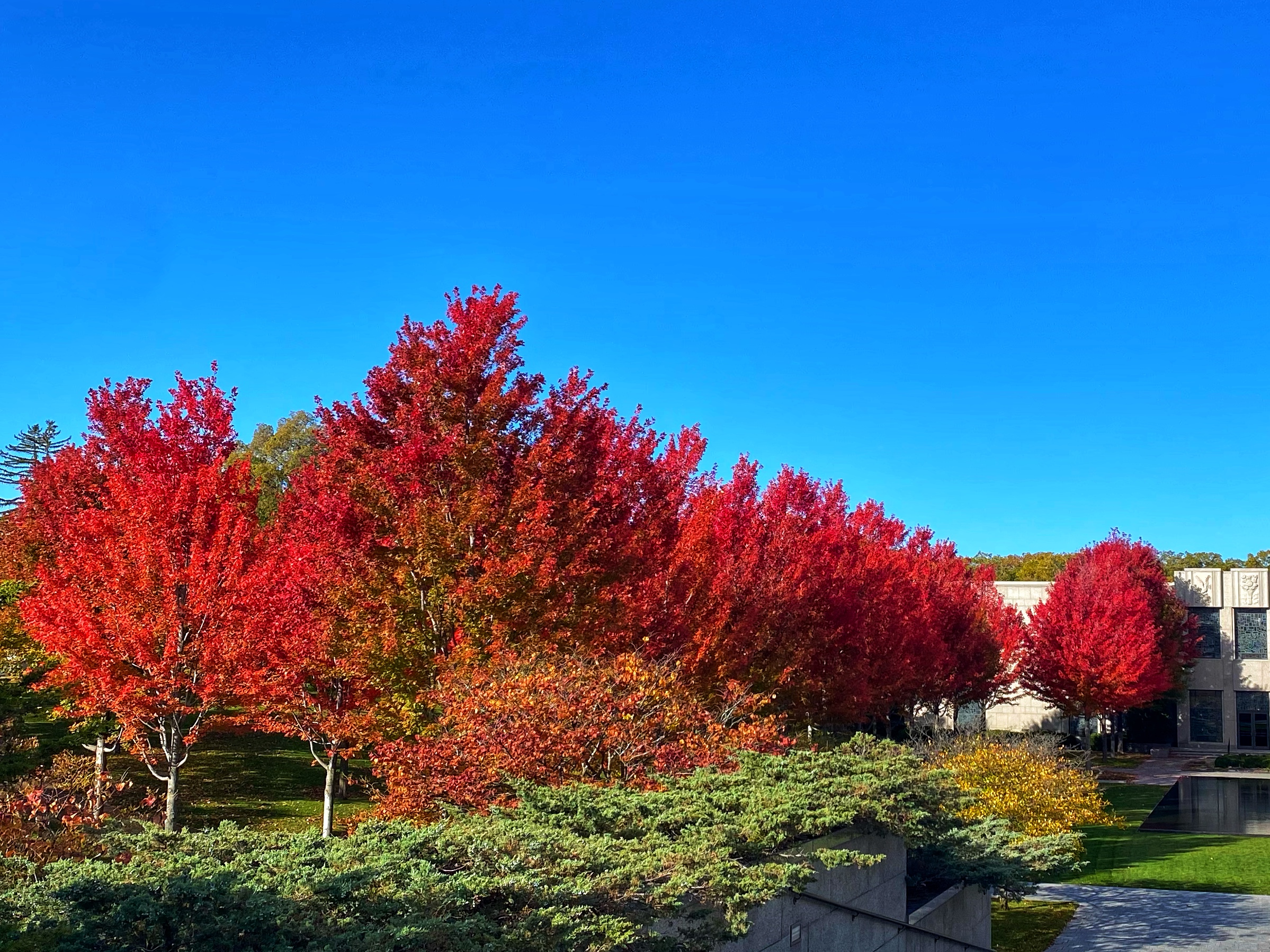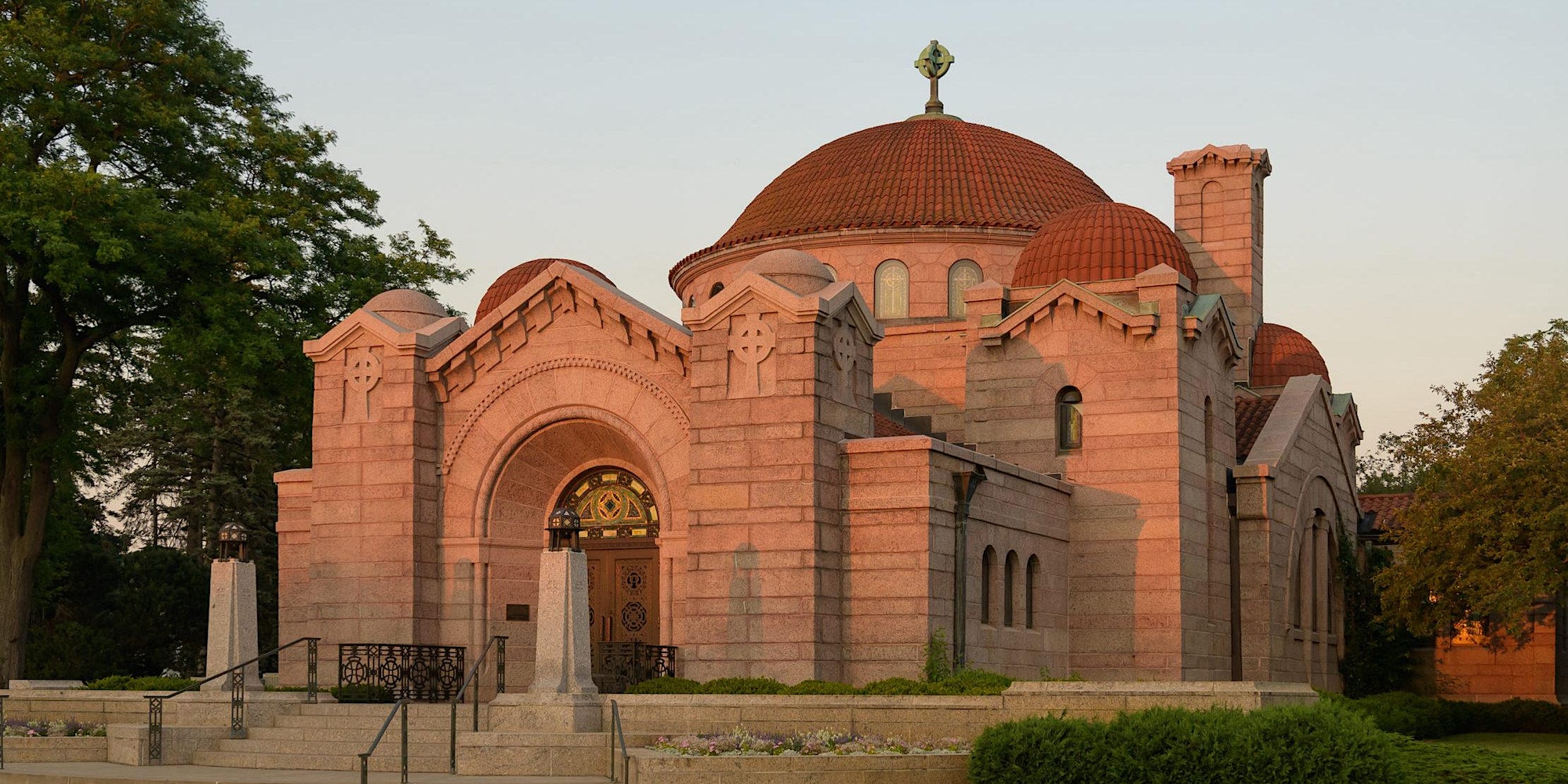
Arboretum
Lakewood is Now an Accredited Level 2 Arboretum
Since its founding as a “garden cemetery” in 1871, Lakewood has been distinguished by its commitment to its natural landscape. This excellence is now formally acknowledged in Lakewood’s new designation as an accredited Level 2 Arboretum, the only one in the state of Minnesota. Only the Minnesota Landscape Arboretum ranks higher.
This arboretum designation recognizes that Lakewood’s 250-acre grounds are a dedicated green space where trees and shrubs are intentionally cultivated for scientific and educational purposes. Lakewood is home to a biodiverse tree canopy of more than 4,000 trees, thousands of other shrubs and specialty plants, myriad wildlife and a thoughtfully planned ecosystem.
“Nature is—and always has been—an absolutely integral part of the Lakewood experience. Our green spaces impart a sense of peace and calm. Visitors tell us that spending time here is uplifting and renewing, whether it’s a family out for a walk on a beautiful spring afternoon or someone who is grieving. Becoming an accredited Arboretum validates this important aspect of our historic legacy and future vision.”
Chris Makowske
President
Stewards of the land
Lakewood offers opportunities to be immersed in nature.
Lakewood’s Arboretum designation supports the cemetery as it continues to proactively manage its biodiverse tree canopy and plant collections and to expand nature-based educational programming and memorialization offerings.
“As stewards of this ecosystem, we must be vigilant about its care,” notes Lakewood Director of Buildings & Grounds, Paul Aarestad. “In the past year we added 15 different species of trees to enrich the visitor experience—factoring in the effects of climate change, invasive pests and disease and the lifecycle of each tree.”
Sustainability Initiatives
Lakewood is looking ahead.
Our current focus is on increasing trees and plant life to maintain the beautiful gardens and vistas that families expect and value when they visit. Additionally, Lakewood is using more organic and environmentally friendly substances and equipment, working to manage stormwater effectively, and has opened a new zero-energy ready Welcome Center. Read more about sustainability and stewardship at Lakewood.
Arboretum Events
Part of our focus as a Level 2 Arboretum is providing educational opportunities related to trees, including ecology and conservation. Our events are open to all. We hope you will join us at an upcoming event.
General FAQs
What is an arboretum?
An arboretum is a dedicated green space where trees and shrubs are intentionally cultivated for scientific and educational purposes. ArbNet, the network for tree-focused professionals that accredits arboreta, requires arboretums to conduct scientific research and conservation, engage in public outreach and education, and manage beautiful and diverse tree collections.
Lakewood, a sanctuary in the city—with rolling hills, shady lanes and bucolic lake views and a thoughtfully planned ecosystem that’s home to diverse wildlife and more than 4,000 trees in a wide variety of species, is now formally accredited as an Arboretum. Lakewood visitors will find a rich and renewing nature experience on our walking paths and 9 miles of wide, winding roads. There is also Jo Pond, a popular spot for nature lovers, with benches and quiet open spaces to reflect along its wide shores.
How are arboreta classified and what does it mean to be a Level 2 arboretum?
There are four arboreta designations, based on various degrees of development, capacity and professionalism. Level 1 is the most common. Level 2 arboreta (which is Lakewood’s designation) have at least 100 species of woody plants, employ paid staff, have enhanced public education programs and a documented collections policy. The Minnesota Landscape Arboretum in Chaska (Level 4) has received the highest ranking and is the only arboretum in Minnesota at a higher level than Lakewood.
Is admission to the arboretum free?
The arboretum designation acknowledges that all Lakewood’s 250 acres of wooded grounds are a place of great natural beauty that meets the criteria of a certified arboretum. Lakewood’s grounds are always open to visitors at no charge, 365 days a year. Gate hours change based on the seasons.
Are there special programs, walks or tours?
Yes! Lakewood offers public programs like birding and nature walks. Click the events link above to see our upcoming arboretum programs.
In the months and years ahead, Lakewood will continue to expand these educational programs related to the arboretum: special events, tours, courses, volunteer opportunities, etc. based on people’s increasing interest in spaces and programs that embrace a more natural and environmentally sensitive approach.
What is Lakewood’s history regarding trees and horticulture?
For nearly 150 years, since its founding as a Garden Cemetery, Lakewood has built a diverse and beautiful array of trees and bushes. Lakewood’s earliest leadership included influential Minnesotans who were very interested in plants and landscape architecture. Since then, Lakewood’s trees, shrubs and gardens have been a living laboratory of botany and horticulture. Thanks to these early efforts, Lakewood is home to one of the most beautiful collections of trees in Minneapolis. These efforts continue today, in the past year Lakewood began an extensive tree planting initiative, with 150 new trees just added.
What kind of wildlife can be experienced in the arboretum?
The diversity of Lakewood’s ecosystem creates a variety of habitat for birds and animals. Today, the cemetery is a haven for fox, rabbits, owls, pheasants, songbirds, falcons and more. Lakewood is directly adjacent to the Roberts Bird Sanctuary (and in fact donated the land for it) and is home to many diverse species as a result.
What are future plans for the arboretum and Lakewood’s tree canopy?
Lakewood’s plans are being shaped, in part, by delving into its roots in the Garden Cemetery movement, which was characterized by landscaped, park-like settings with winding roads and long views. Lakewood’s future landscape plan will carefully shape guests’ experience as they move through the grounds by enhancing certain sightlines and viewpoints from different vistas—all while increasing biodiversity.
Why is biodiversity so important?
Around a century ago Lakewood, like many places, simplified its tree-planting approach and began planting more common choices like elms and ash trees. Sadly, when diseases like Dutch Elm and pests like the emerald ash borer hit, Lakewood lost many trees. As our climate changes and new tree diseases emerge or migrate here, our trees will continue to face new threats. Planting a biodiverse woodland is key to both a beautiful setting and a resilient landscape.
What new types of trees is Lakewood considering?
To increase biodiversity, we are using up-to-date technological and strategic tools to select a diverse tree range both in species and size. In addition to choosing hardy, native varieties such as maples, lindens and oaks, we have selected trees for planting that are new to Lakewood, including:
- Katsura, a newer tree species
- Tulip trees, which typically would not have done well with Minnesota winters, but should thrive now that our climate is changing
- Two kinds of magnolia trees
- Sycamores, a majestic shade tree
We will also experiment with a variety of sizes from more mature trees down to saplings. The plan takes into consideration new and potentially threatening diseases and pests that are known to be coming.
Will the Arboretum affect existing burial sites?
There will be no effect on existing burial sites. In fact, becoming a certified arboretum will provide even more seasonal beauty and the shady spaces that so many families appreciate.
How is this focus on trees being funded?
Maintaining and improving our beautiful landscape is a high priority in the Lakewood operating budget. That said, the Lakewood Heritage Foundation has generously helped us raise funds specifically to purchase and plant new trees. Our master plan calls for the addition of more than 25 types of trees over the next few years. We are grateful to donors to the Foundation for their support of this critical initiative.
Questions/Contact
For questions about this project, contact us at info@lakewoodcemetery.org.
Sign Up for the Lakewood Newsletter
Lakewood celebrates its past, present and future through our monthly newsletter. Sign up to be the first to know about limited-capacity events and to stay engaged with the latest thinking and practices around death and remembering.




